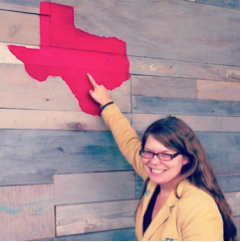Food photography tips for your cookbook
Just in time for the holiday food extravaganza, we invited guest blogger Erin Vaughan to give us tips for great food photography.
Whether you consider yourself the next Wolfgang Puck or just want to pay homage to Grandma’s homemade applesauce, a personalized cookbook—complete with plenty of lush, appetizing photos—is a great way to preserve your home’s culinary history. It also gives you a chance to show off your artistic side!
Here are some food photography tips for taking gorgeous, mouth-watering cookbook pictures.
How to take food pictures like a pro
You may have already mastered the art of composing a great brunch shot, but food photography for your home cooking means learning a whole new skill set: The art of plating. Professional chefs have many tricks up their sleeves that make their dishes as beautiful to look at as they are delicious. Learn how to plate like a pro with these six easy food photography tips.
1. Use white cookware
White plates, bowls, and dishes provide a clean, elegant backdrop for homemade meals so your food can really pop. For your food photography shots, you can purchase dishware that won’t break the bank with a stop by your local restaurant supply store.
2. Don’t be afraid to try unexpected surfaces
A slate tablet, small wooden cutting board, or piece of burnt parchment paper adds authenticity and provides a note of interest to less colorful meals. Since cookbooks often seek to capture the more nostalgic aspects of cuisine, meals served in heavy crockery or shots of family-style table settings may also be appropriate.
3. Always plate in odd numbers
Symmetry is great for most things, but for some reason, odd numbers look especially appealing on the plate for food pictures. Three scallops will always seem more enticing than two, and five Brussels sprouts are somehow more alluring than four.
4. Garnish with contrasting colors
Many meals, particularly traditional fare, aren’t colorful. For cookbook photography, it’s important to liven up classic rice dishes, desserts, and creamy pastas with vibrant garnishes. For instance, place a sliced tomato, a sprig of rosemary, or a lemon wedge on a dish to add character to your photos. However, don’t get too whimsical with your garnishes—make sure they’re still something that complements the meal.
5. Compose shots with raw ingredients
Since this is a cookbook, you want your reader’s eyes to linger on the raw ingredients used to make each dish. A cup of soup nestled between fresh stalks of celery, herbs, and carrots adds appeal while illustrating the cooking process.
6. Add a little oil before shooting
A thin layer of oil brushed across salads, breads, and other dishes helps your food capture the light, making it look moist and delicious.

Food photography tips and basics
Food is notoriously hard to photograph. Ever looked at the unfiltered photos in older cookbooks? Something about putting it on paper can make even the most appetizing plate appear flat. Thankfully, photographers have lots of advice on how to avoid bland food pictures:
1. Avoid angles
Especially if you’re shooting with your smartphone camera, straight-on shots—or those taken from directly over your plate—tend to look better than pictures shot at an angle. You can use unique cropping techniques later to reframe your food pictures in a way that adds interest.
2. Don’t get filter-happy
If you’re an amateur photographer, you already know how fun filters can be, but for snapping great food shots, try to avoid heavy filters. In fact, if you have some photo editing skills, toying with your pictures’ saturation, sharpness, and other levels keeps photos crisp while allowing you to add some professional sheen.
3. Be aware of your light source
Images tend to flatten out when they’re shot with the light coming from the front. Instead, try to compose your photos so that they’re backlit, which will make the individual components shine.
Food pictures aren’t the only thing going into a cookbook, of course. Blurb’s book creation tools can help you do the rest of the work to lay out your photos and combine them into a printed cookbook. Bon appétit!

Erin Vaughan is a blogger, gardener, and aspiring homeowner. She currently resides in Austin, Texas, where she writes full-time for Modernize.com, with the goal of empowering homeowners with the expert guidance and educational tools they need to take on big home projects with confidence.


This post doesn't have any comment. Be the first one!